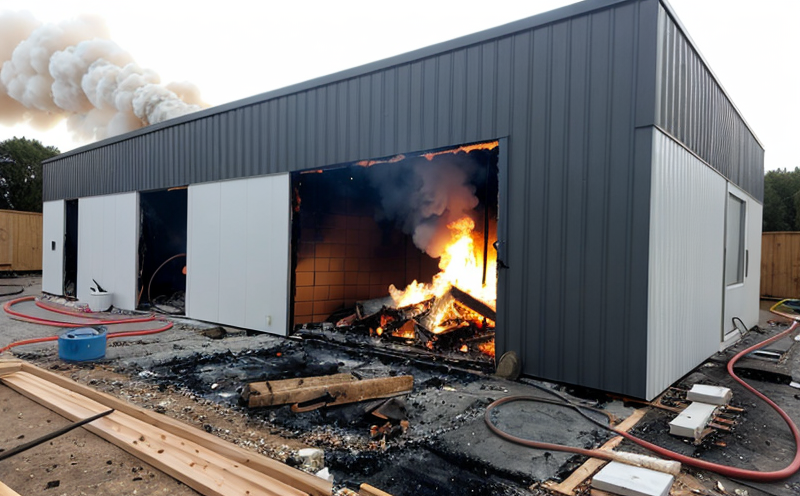EN 13501-1 Fire Classification of Construction Products Validation Method Development Test
The EN 13501-1 standard provides a methodology for the fire classification of construction products, including insulation and cladding materials. This validation method is crucial in ensuring that building materials meet stringent safety requirements and contribute to overall fire resistance. The test procedure outlined in this standard is designed to simulate real-world fire scenarios accurately.
The EN 13501-1 test involves exposing a specimen of the construction product to a controlled flame source under specified conditions. This allows for the determination of whether the material meets the necessary criteria for fire resistance, including its ability to resist ignition and maintain structural integrity during a fire event. The test can be conducted on various types of materials such as insulation boards, cladding panels, and other building components.
Before performing the EN 13501-1 test, proper specimen preparation is essential. This includes cutting the material into standardized sizes to ensure consistency across tests. The specimens should also undergo conditioning in a controlled environment to simulate real-world conditions before testing begins. During the actual test, the specimen is exposed to a flame source for a specified duration, and its behavior is monitored closely.
The instrumentation used in this test can vary depending on the specific requirements of the standard. Common equipment includes calorimeters, pyrometers, and video cameras to capture the specimen's response to the fire exposure. The data collected from these instruments provides critical information about the material's performance, which is then used to determine its compliance with the EN 13501-1 standard.
Based on the test results, a report detailing the specimen’s performance and compliance status will be prepared. This report serves as proof of the product's fire resistance properties and can be used by architects, builders, and other stakeholders to ensure that the materials they use meet the necessary safety standards.
| Applied Standards |
|---|
| EN 13501-1:2010+A1:2019 |
The EN 13501-1 standard is widely recognized and accepted across Europe. Its rigorous testing procedures ensure that construction products are safe and reliable, contributing to the overall fire safety of buildings.
Why It Matters
The EN 13501-1 standard is essential for ensuring the fire safety of construction materials. By validating the fire classification of these products, it helps prevent fires from spreading quickly and effectively, thereby saving lives and minimizing property damage.
The standard's rigorous testing procedures ensure that only high-quality materials are used in buildings, which can significantly reduce the risk of fire incidents. This is particularly important for insulation and cladding materials, as they often form the outer envelope of a building, making them critical in maintaining fire resistance.
In addition to protecting lives and property, complying with EN 13501-1 ensures that architects and builders can confidently select materials that meet regulatory requirements. This not only enhances the safety of buildings but also supports sustainable construction practices by promoting the use of fire-resistant products.
Applied Standards
- EN 13501-1:2010+A1:2019
The EN 13501-1 standard is the primary reference for fire classification of construction products. It specifies the procedures and criteria for testing materials to determine their fire resistance properties.
International Acceptance and Recognition
- The EN 13501-1 standard is widely accepted across Europe, including countries such as the UK, Germany, France, and Italy.
- It is also recognized in other parts of the world for its robust testing methods and comprehensive coverage of fire safety requirements.
The standard's acceptance extends to various industries, including construction, architecture, and building materials. Its rigorous approach ensures that only high-quality, safe products are used in buildings, contributing to overall fire safety.





